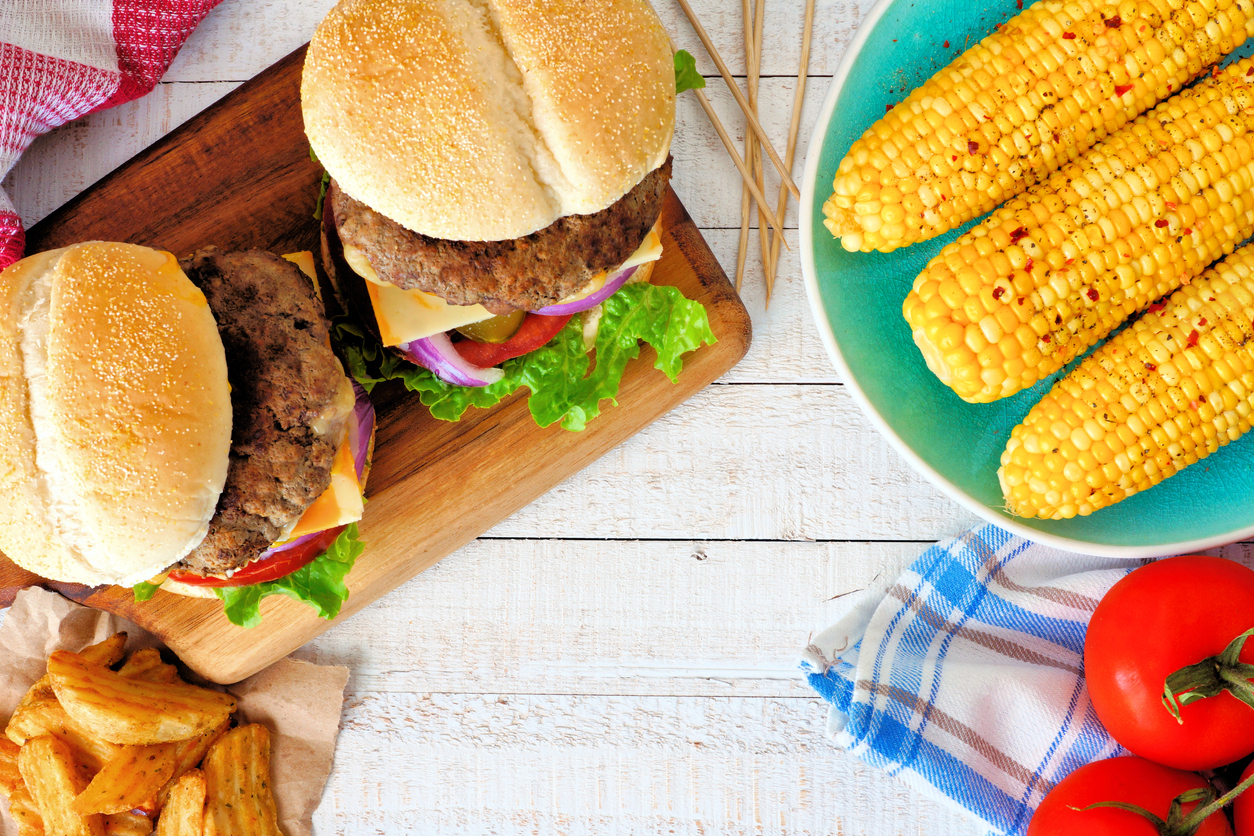During the summer, family gatherings are a precious time to share, play and enjoy outdoors. Barbecuing outside is a good time to enjoy fresh air and warm weather. Let us not ruin it by learning ways to prevent food contamination. One in six Americans will become sick from food poisoning every year. Here are some ideas on how to prevent food borne illness at these special events. 
- Wash your hands with soap and water at the beginning and end of a task. Hand sanitizers are not the best way to get rid of dirt or germs; hand washing is.
- Clean all surfaces with soap and water and sanitize with a mix of one-teaspoon chlorine bleach and one-quart water.
- Use a separate cutting board for meats and one only for vegetables.
- Use separate spoons and forks to stir, taste, and serve food.
- Meat should be cooked to the following internal temperature. Insert a thermometer in the thickest part of meat to determine accurate temperature.
- Steaks, chops of pork lamb, beef, veal and lamb: 145°F for 3 minutes
- Poultry (whole or ground): 165°F
- Eggs dishes: 160°F or until yolk and white are firm
- Stuffing: 165°F
- Ground meat, ground seafood: 155°F for 17 seconds
- Place cooked food in a clean container and never baste food with uncooked marinade.
- Do not overcook meats or char (burn) them. Cooking at high temperatures can lead to carcinogen formation. Marinating may reduce the formation of these compounds.
- Continuously turning meat over on a high heat source can substantially reduce Heterocyclic amines (HCA-a carcinogen formation) compared with just leaving the meat on the heat source without flipping it often.
- Remove charred portions of meat to reduce HCA exposure.
- Defrost frozen meats in the refrigerator, never on the kitchen counter.
- Refrigerate leftovers within two hours or one hour if temperature is at or above 90 degrees.
- Store leftovers in shallow containers, no more than 2 inches deep.
- Keep food in a clean refrigerator under 40°F or freeze at 0°F.
References:
https://edis.ifas.ufl.edu/pdffiles/FY/FY73200.pdf
https://edis.ifas.ufl.edu/pdffiles/FS/FS19500.pdf
https://edis.ifas.ufl.edu/pdffiles/FY/FY48100.pdf https://www.fsis.usda.gov/shared/PDF/Cooking_for_Groups.pdf
Chemicals in Meat Cooked at High Temperatures and Cancer Risk, National Cancer Institute, at the National Institute of Health. http://www.cancer.gov/cancertopics/factsheet/Risk/cooked-meats
 OTHER LANGUAGES
OTHER LANGUAGES
 OTHER LANGUAGES
OTHER LANGUAGES